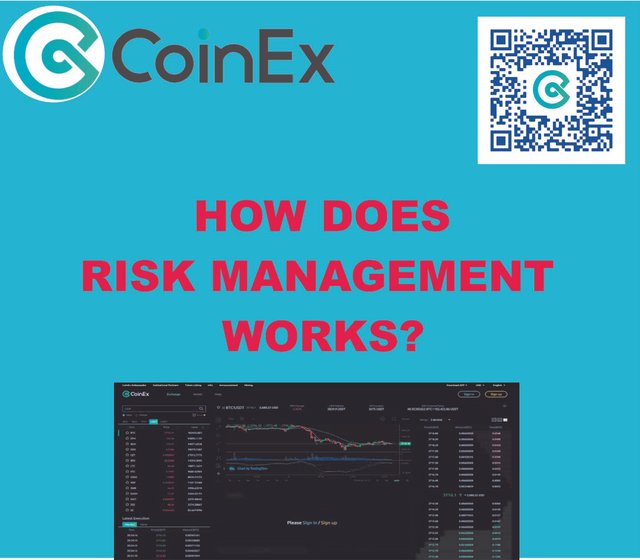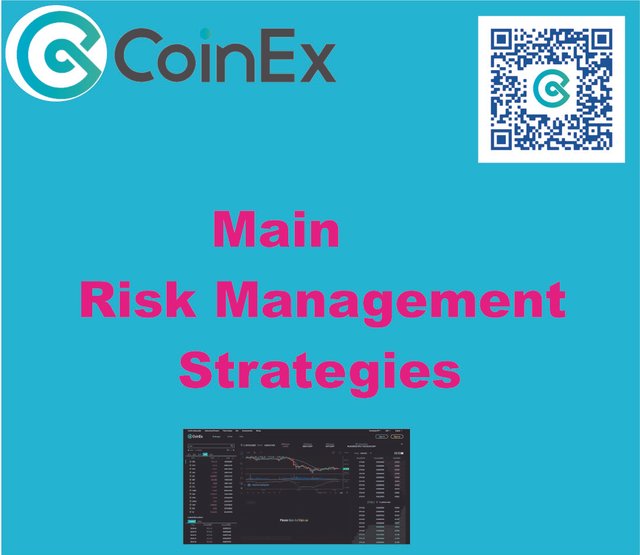Risk Management

What is Risk Management?
Risk Management entails reducing the chances of a negative turn of events in business such as trading cryptocurrency. Similar to security trading, cryptocurrency trading is just as risky, or even worse when you consider how volatile the market can be.
Types of Risk
To understand just how risk management works, you have to familiarize yourself with the different forms of financial risk as each requires a distinct approach to keeping the situation under control.
Here are the different types of risks:
- Liquidity risk
Have you even being stuck in a particular position – to avoid selling at a loss - while trading cryptocurrency? That’s liquidity risk right there. If you can’t convert your assets to fiat, then you’re faced with liquidity risk.
- Operational risk
This type of risk occurs when you feel handicapped as a cryptocurrency trader – you can’t do with your assets as you wish. It’s often due to problems emanating from the exchange or wallet vendor. For instance, OkEx has recently announced a decision to freeze the withdrawal or deposit of bitcoin, and this is a clear case of operational risk as such are likely in this business.
- Legal Risk
This is used to describe the likelihood of an undesired outcome due to changes in relevant legislation or policies. A good example of such is the recent arrest of the Bitmex top hierarchy for money laundering charges.
- Market Risk
This is used to describe the negative effect of market forces on your trading position. For instance, if you decide to buy Bitcoin at $11400 hoping to sell at $11700 on CoinEx, but the price of the cryptocurrency drops below the $11400 mark; this is a clear case of a risk dependent on market forces.
- Credit Risk
This type of risk is linked to the survival of cryptocurrency projects. It describes the possibility of a crypto project going the exit scam route. For instance, Bree developers recently minted millions of their tokens, dumped same on investors, and disappeared.

How does risk management work?
Risk management isn’t as simple as flipping a switch. It consists of a series of processes carried out to ensure that losses are kept at the barest minimum. Here are some of the processes executed to achieve a solid risk management plan:

- Establishing the goal
You can’t have a risk management plan without a target in sight. This depends on the sort of risk you can bear. Every trader should know the kind of losses they can stomach and that which will keep haunting them. Having an objective helps make it easier to build strategies for risk management.
- Defining the risks
You can’t have an effective risk management framework without knowing what you’re up against – the risks. By understanding ways by which things can go wrong, managing such becomes much easier. This can be quite revealing and you can make arrangements to reduce such risks.
- Weighing the risks
When the possible risks have been ascertained, you’ll need to confirm the magnitude of such a risk and the nature of its occurrence. On confirming the gravity of the risk, managing it can be done through a scale of preference, using whatever metric you choose.
- Making The Right Call
With the gravity of risk confirmed, you will need to decide what sort of action to take. You have to make the right call and do so based on the nature of the risk involved.
- Keep an eye on your setup
With your risk management plan in motion, you still have to keep tabs on the progress made. Assess the data from the entire management plan and continue to make changes where necessary.
Main Risk Management Strategies

Crypto trading is a risky business, even more than conventional buying and selling of goods and services. You need to have strategies in place to make a profit. This explains why traders often dedicate only a small percentage of their portfolio to trading.
Without further ado, here are the risk management strategies for crypto trading:
Position Sizing
‘The bigger the risk the greater the reward' has put many traders in huge debts. By using large chunks of their portfolio to open specific positions, you can either expect great rewards or gnash your teeth forever.
By keeping your position sizing to a modest amount, you lower the risk of being completely liquidated. While you can open multiple positions for a particular asset, it increases the risk in the long-run, so take note.
Through position sizing, you can spread your position across different assets, and limit the number of positions opened. If that’s not enough, you can further reduce the risk by reverse compounding. This helps keep a firm grip on possible losses.
Another style of position sizing is pegging the amount used to open a certain position at a percentage of your total asset. With price changes, the number of positions opened can be increased, but the percentage remains capped.
Deploying the Stop Loss
Crypto traders deploy the stop loss to keep losses to a minimum as positions are closed once the price drops to the defined low. What many crypto traders fail to understand is that profit-taking should be part of their risk management strategies. Stop Loss and profit-taking work together in ensuring traders stay afloat regardless of the market movement.
Trailing stop losses is another way to manage the risk involved in crypto trading. While this particular feature isn’t a familiar sight on crypto exchanges, CoinEx has you covered.
Risk: Reward
By putting risk and reward side by side, it’s easier to decide if a trade is beneficial or not. While crypto trading is a no guts no glory venture, you still need to calculate the best time to open a position and close one. This is where the risk/reward ratio can help you significantly.
Managing Financial Risks
Risk management strategies have been found to come to naught due to a wide array of cogent reasons. It could be down to aggressive market movement with a trader’s position caught in the crossfire, or down to just inconsistency of decisions made. Managing financial risk requires you to understand the nature of the risk and applying the right approach to keep losses at a minimum.
To manage the risk tied to market forces, then you should set up your stop loss. This way, you won’t suffer heavy losses if the prices to low.
With liquidity risk, it’s always advisable to opt for markets where liquidity is never scarce. At CoinEx, it’s easy to spot such markets.
Crypto traders have to struggle with credit risk, especially with their choice of exchange. Fortunately, you don’t have to worry about that risk when you trade on CoinEx.
Not all cryptocurrency platforms expose you to operational risks. CoinEx is one of the few that you can rely on and not struggle with asset trading.
There’s also the possibility of legal risk as government policies and regulations change. But many transparent crypto platforms like CoinEx keep you in the loop when there’s any new regulation that could affect how you use assets in your possession.
Final thoughts
Having a risk management strategy should always be the first thing you do when trading cryptocurrency. Yet, many traders put the cart before the horse, and this exposes them to heat losses.
Why financial risks will always exist in every trade, risk management strategies help reduce the odds of you being exposed to one. And when such happens, these strategies will ensure you break even, or at least, not incur unprecedented losses.